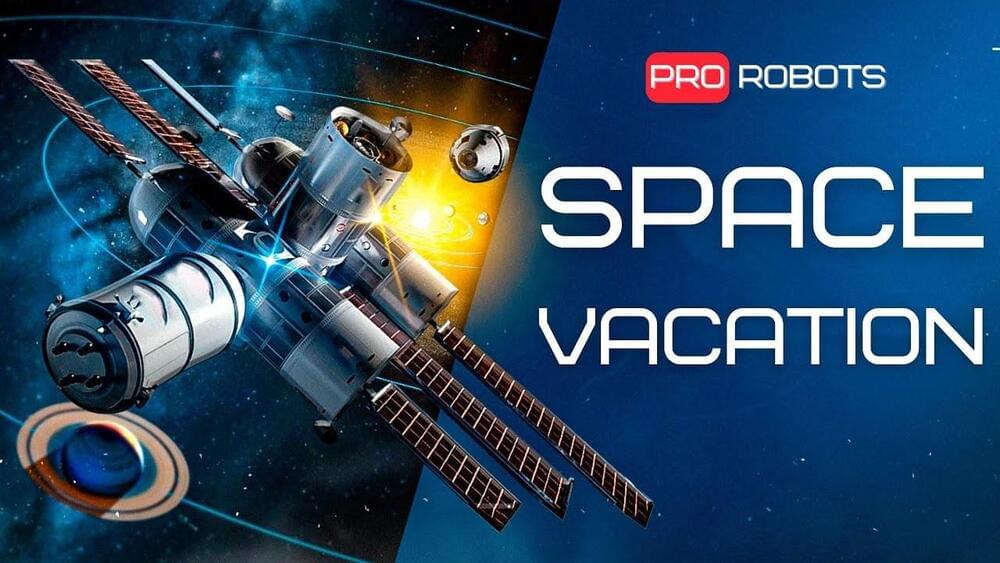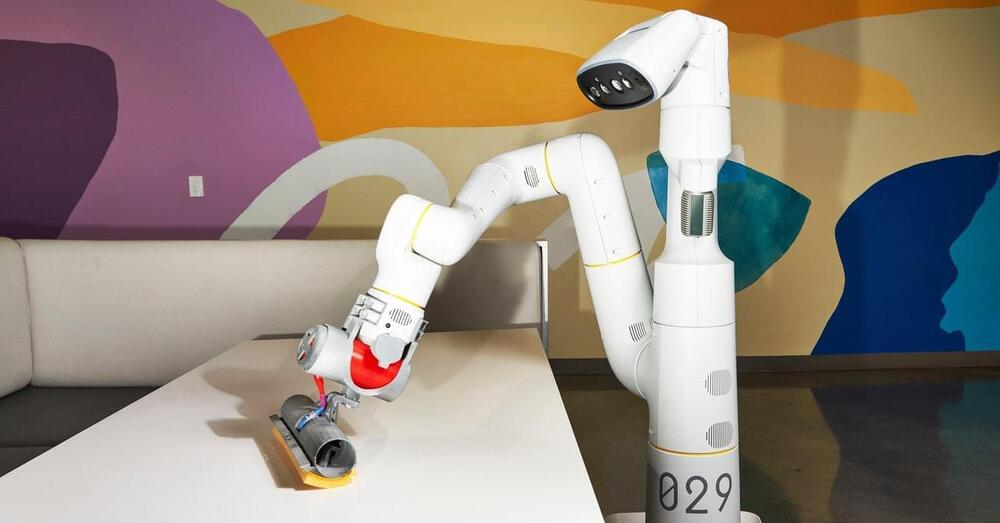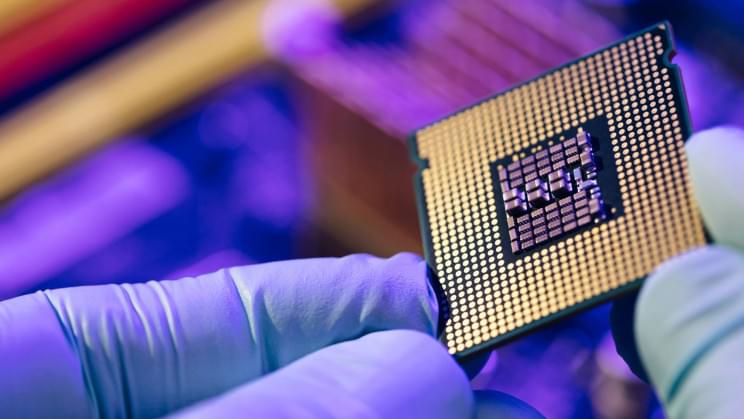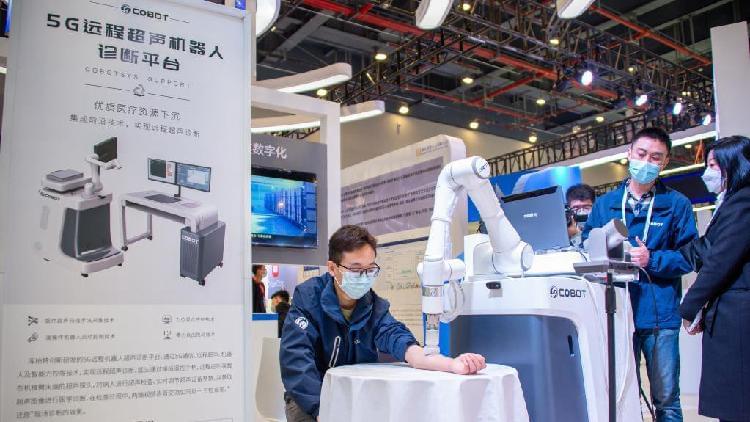In the more distant future, robots can help us in a myriad of ways.



Want AI that can do 10 trillion operations using just one watt? Do the math using analog circuits instead of digital.
There’s no argument in the astronomical community—rocket-propelled spacecraft can take us only so far. The SLS will likely take us to Mars, and future rockets might be able to help us reach even more distant points in the solar system. But Voyager 1 only just left the solar system, and it was launched in 1977. The problem is clear: we cannot reach other stars with rocket fuel. We need something new.
“We will never reach even the nearest stars with our current propulsion technology in even 10 millennium,” writes Physics Professor Philip Lubin of the University of California Santa Barbara in a research paper titled A Roadmap to Interstellar Flight. “We have to radically rethink our strategy or give up our dreams of reaching the stars, or wait for technology that does not exist.”
Lubin received funding from NASA last year to study the possibility of using photonic laser thrust, a technology that does exist, as a new system to propel spacecraft to relativistic speeds, allowing them to travel farther than ever before. The project is called DEEP IN, or Directed Propulsion for Interstellar Exploration, and the technology could send a 100-kg (220-pound) probe to Mars in just three days, if research models are correct. A much heavier, crewed spacecraft could reach the red planet in a month—about a fifth of the time predicted for the SLS.

✅ Instagram: https://www.instagram.com/pro_robots.
You’re on the PRO Robots channel and in this episode we’re going to talk about a vacation in space. When will this cherished dream come true? How will such a trip take place, what will the preparation consist of, how much does a trip and service in space cost, what will be the food for the space tourists and what are the living conditions and dangers awaiting them — watch this video! Watch this episode to the end and write in the comments: would you dare to go on a space vacation?
0:00 In this video.
0:25 Our Everything.
1:19 Space Perspective.
1:52 SpaceX
3:17 Roscosmos and Space Adventures.
3:46 Orbital Assembly Corporation.
5:00 Astronaut Menu.
5:46 weightlessness and the human body.
6:37 Rest on the Moon.
#prorobots #robots #robot #future technologies #robotics.
More interesting and useful content:
✅ Elon Musk Innovation https://www.youtube.com/playlist?list=PLcyYMmVvkTuQ-8LO6CwGWbSCpWI2jJqCQ
✅Future Technologies Reviews https://www.youtube.com/playlist?list=PLcyYMmVvkTuTgL98RdT8-z-9a2CGeoBQF
✅ Technology news.
#prorobots #technology #roboticsnews.

Plus: The man behind a famous paradox, the laws that will govern the metaverse, and a deadly swarm of scorpions.

Move over, Hollywood—science fiction is getting ready to leap off the big screen and enter the real world. While recent science fiction movies have demonstrated the power of artificially intelligent computer programs, such as the fictional character J.A.R.V.I.S. in the Avenger film series, to make independent decisions to carry out a set of actions, these imagined movie scenarios could now be closer to becoming a reality.
In a recent study published in Nature Communications, a journal of Nature, researchers at the University of Missouri and University of Chicago have developed an artificial material, called a metamaterial, which can respond to its environment, independently make a decision, and perform an action not directed by a human being. For example, a drone making a delivery might evaluate its environment including wind direction, speed or wildlife, and automatically change course in order to complete the delivery safely.
Guoliang Huang, Huber and Helen Croft Chair in Engineering, and co-author on the study, said the mechanical design of their new artificial material incorporates three main functions also displayed by materials found in nature—sensing; information processing; and actuation, or movement.

The price of decentralized blockchain network Algorand (ALGO) surged after the announcement of a new strategic partnership with a real estate firm powered by artificial intelligence.
In a press release, the Algorand Foundation says it’s joining forces with Lofty AI to create a marketplace for investment in tokenized real estate.

Think about the last time that you found yourself driving a particularly treacherous blind curve.
Pretty darned scary, I’d bet.
Indeed, I realize that even the mere act of thinking about such an alarming encounter can be traumatic, so no need to reflectively linger on that reenactment in your mind. Go ahead and change your thought patterns to something less stressful such as mulling over the latest online cat videos or perhaps that delicious scoop of ice cream you recently consumed.
Meanwhile, let’s have a heart-to-heart serious talk about blind curves.
When first learning to drive, few newbies are specifically instructed about blind curves. Sure, there might be discussions about what to do when reaching an especially sharp curve, but the whole conundrum of dealing with a sharp and blind curve is not necessarily resolutely covered.
Full Story:

Including ‘cloud, AI, and machine learning-enabled automation’.
The US National Security Technology Accelerator (NSTXL) announced on Thursday that it has chosen Microsoft to build advanced chips for the military.
“Historically, the security requirements associated with developing microelectronics have limited the U.S. Department of Defense’s (DoD) ability to leverage the latest innovations,” wrote in a blog Tom Keane, Corporate Vice President, Azure Global, Microsoft Azure.
“Through a recent DoD-sponsored project, Rapid Assured Microelectronics Prototypes (RAMP) using Advanced Commercial Capabilities, the goal is to leverage commercial best practices to help accelerate the development process and bring reliable, secure state-of-the-art microelectronic design and manufacturing to national security and defense applications.”
Full Story:

Palo Alto Networks on Tuesday unveiled a new cloud security offering, its next-generation Cloud Access Security Broker (CASB), which taps machine learning to bolster the protection of software-as-a-service (SaaS) and collaboration apps.
The company’s next-generation CASB platform will use ML and AI to provide capabilities such as the automatic discovery of applications and improved data loss prevention for sensitive data, the company announced.
The next-generation CASB is the latest product from the Santa Clara, California-based cyber firm to get a significant injection of ML-and AI-powered functionality, said Lee Klarich, chief product officer at Palo Alto Networks, in a briefing with reporters.

China’s Ministry of Industry and Information Technology (MIIT) on Saturday released its second batch of extended goals for promoting the usage of China’s 5G network and the Industrial Internet of Things (IIoT).
IIoT refers to the interconnection between sensors, instruments and other devices to enhance manufacturing efficiency and industrial processes. With a strong focus on machine-to-machine communication, big data and machine learning, the IIoT has been applied across many industrial sectors and applications.
The MIIT announced that the 5G IIoT will be applied in the petrochemical industry, building materials, ports, textiles and home appliances as the 2021 China 5G + Industrial Internet Conference kicked off Saturday in Wuhan, central China’s Hubei Province.